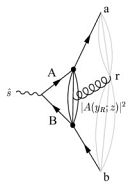|
| InstallationThe following simple steps set up a standalone VINCIA installation from scratch, complete with linking to PYTHIA 8 and ready-to-run example programs (assuming you have working C++ and F77 compilers which are mutually compatible):
Linking and initialization of VINCIA is done automatically
when the More examples, and more complete instructions on how to install, link, and use VINCIA also in more complicated setups can be found in the HTML User Reference and Manual and in the README. Documentation
User Guides and Reviews
VINCIA Articles & References
| |
|||||||||||||||||||||||||||||||||||||||||||||||||||||||||||||||||||||||||||||||||||||||||||||||||||||||||||||||||||||||||||||||||||||




